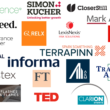Tyler Brûlé is maddening. Almost twenty years ago, he was the lauded creator of urban design bible Wallpaper when print was still the hottest thing. Now, he is fast building a media brand based – of all things – on a 300-page printed magazine about global politics, travel, fashion, culture, food, and esoteric luxury.
It has extravagant production values, a seemingly limitless staff travel budget, no iPad edition, and a minimal online and social media presence. Welcome to Monocle, the London-based magazine launched in 2007, five years after Brûlé quit Wallpaper in a spicy row over sky-high expenses.
The UK media chattering classes predicted a short life for Monocle even while the ultra-cool Canadian-born journalist was promising “a global media brand that will be distinctive through its mix of smart journalism, international awareness and razor-sharp design”. He was targeting “consumers who are locals no matter where they land – they live on long-haul carriers, have multiple residences, cross borders daily, and crave a world-view rather than a domestic rendition.”
The magazine is an amazing, jam-packed mix of well-written insights and information about cities, travel and culture, wrapped in lists of cool places and stuff-to-share that BuzzFeed would be proud of. Google spews the endless list of cities crowing about their inclusion in a Monocle list. It’s ‘BuzzFeed meets Burberry’ for a mobile global audience interested in discovering best practice and people, and benchmarking success in everything from city governance to simple architecture.
The magazine’s content and tone are unfashionably fashionable. It eschews celebrities and has been described as earnest rather than ironic. Like Brûlée himself, Monocle has high-flying tastes but also a deep curiosity about the state of infrastructure in big cities and small towns, and what makes a city work: “I guess what unifies things for me is a passion for quality. And that has to strike both high and low. I’m on a campaign against cheap veneers and varnishes. We like to stand back and kick the tyres a bit, not just celebrate whatever it is, whether it’s premium travel or the redevelopment of a city block. It all has to function.” The magazine can tell you about the places where public housing solves social problems and how cities can improve traffic safety (try La Paz where hiring youths in zebra costumes apparently had a strangely beneficial effect).
Its readers get to be as interested in shenanigans at city hall in Belo Horizonte, Brazil, as they are in understanding how Afghan drug barons have destroyed the temples of a remote village. Monocle readers are as keen to know where to get great toiletries in Zurich, delicious margaritas in Tokyo, and which cities have the fastest free internet.
Everything about the 10-times-a-year magazine seems appetisingly odd and almost too good to be true. It is a quality operation with a large team of journalists, designers, and marketing people. Its journalists (and not just the editor-in-chief himself) really do have captivating insights into the people and places they write about, and the native advertising is slickly put together. The magazine has the mix of five or six types of matte and glossy paper, high-quality photography, and production tricks that seem calculated to show they are not doing it on the cheap. It even has a rubber band that acts as a bookmark and fastener for the smaller, travel guides published in most issues.
But, for all the expensive details (Brûlé is strong on detail), this is a sharp-edged commercial operation. Its website sells design and fashion products from loafers through stationery and luggage, which are also retailed in little Monocle shops in London, Hong Kong, Toronto, and New York. Then there are the Monocle coffee shops in Tokyo and London, about which Time Out said: “If you’re a Monocle fan, you’ll love this well-styled product and the feeling of being in with the ‘in-crowd’. Even if you’re not a fan, the bought-in cakes and pastries are good – enough to make you not mind that you’re being used as a marketing opportunity.”
The magazine itself has a periscopic, supra-national view of international affairs, business, culture, design, and fashion but is exclusively English language. US-based Advertising Age included Monocle in its “Magazine A-list” alongside New Yorker, Vogue and The Economist and named Brûlé as “editor of the year” in 2011, even though many serious media people still can’t take him seriously. But it seems to be working because Monocle sells some 77,000 copies around the world for £6 a time ($14 in the US), over 80% outside its UK base.
There are, predictably, some “multiple sales” in that total. But, in a world of magazine free-fall, Monocle’s copy sales are creeping up, and its paid circulation is now almost twice that of its long-lost cousin Wallpaper. Its inventive 24-hour online radio station is also building a substantial reputation, in competition with TED talks and podcasts for travellers’ ears and iPods. And, just to complete the set, Monocle produces seasonal, low-circulation newspapers for their readers on the slopes of Gstaad and beaches of Cannes.
This is a media brand that is defying all the odds. But media sceptics are still shaking their heads and wondering when Tyler Brûlé is going bust or why he hasn’t. What they haven’t reckoned on is: Brûlé’s extraordinary ability to bring his vision to life; the phenomenal growth of luxury advertising; and the loyal support of the international club of private investors for whom Monocle might be as enjoyable as it is for the founder himself. And that is part of what makes it all so maddening. This bulging magazine is thriving in a world where relationships and style might just matter more than mere statistics – to advertisers as well as readers.
Brûlé is having the time of his life building a reputation for, well, being cool. It is a carefully crafted image, cultivated by exquisite grooming, an absence of Twitter and Facebook, and a ‘Fast Lane’ column in the weekend edition of the Financial Times which chronicles his globe-trotting adventures, unearthing the rarefied and idiosyncratic. He recently wrote: “I’ve been taking a ‘one week off/one-to-two weeks on’ approach to the holidays this year and, for the most part, have been touching down in Switzerland or Italy. So far, there has been a trip to Forte dei Marmi (a company retreat, in fact), a lot of South Tyrol and bits of the chilly and waterlogged Engadin valley.” The FT column helps market Brand Brûlé and his Winkreative branding and design agency, whose raft of international clients (including Swiss International Airlines, Tag Heuer, Stella McCartney, Lexus, and Porter Airlines) are all over the magazine.
Brûlé is easy to mock but luxury market advertisers love him because he really is living the life his magazine (and their products) espouse. And he inspires cultish devotion partly from the perception that he gets the tiniest details right – in the magazine, on his travels and in Monocle’s ultra-tidy, no jackets-on-chairs, no-eating-at-desks offices.
In 2012, The New York Times called him “Mr Zeitgeist” and said: “In many ways, Brûlé, 42, has become the gold standard of what is currently considered modern ‘good taste’, a Martha Stewart for the global elite (like Stewart, he inspires acolytes and parodists). Just look at what Wallpaper unleashed. If he thinks there’s a future in fragrant print… and soothing 24-hour radio talk shows, well, maybe there is.”
Jayson Tyler Brûlé was born in Winnipeg in 1968. He is half Estonian, but was raised in Canada: “I grew up in a variety of cities from Ottawa to Montreal to Toronto, in an era before the invasion of US TV channels across the border. From an early age, I was dazzled by the big nightly newscasts and I always wanted to stay up late and see these men and women broadcast from around the world. In parallel, I grew up in a magazine household, whether it was Forbes or my mother’s decorating magazines. Around the dinner table, they talked about life behind the Iron Curtain. That global sensibility seeped into the décor, too. I was surrounded by Danish furniture, because that’s what Estonians felt safe buying when they came to Canada after the war.”
His father Paul’s career, first as a professional Canadian Football League player and later as a marketing executive, meant that Tyler spent much of his youth traveling all over the world. After graduating from high school, Tyler entered journalism school but lasted only two years before he relocated to the UK in 1989. He jumped and jived in successive jobs as a rookie journalist including a stand-out spell as a reporter for the BBC’s brash 1990s current affairs series Reportage. He appeared on TV for Fox News and Good Morning America, and in print for the UK’s Sunday Times, Elle, Stern, and Toronto’s Globe & Mail. His freelance writing included a splash about decadent teenagers driving their Ferraris to the beach in Beirut.
The Brûlé legend began properly in 1994 after he was described by one editor as the perfect glossy magazine foreign correspondent: “He’s not scared of war, and he knows a good pair of trousers.” On cue, he was in Afghanistan, variously reported either as a commission for German newsmagazine Focus or volunteering for Medicins sans Frontieres. While travelling in Kabul, his car was ambushed. He was shot in his shoulder, and two other bullets severed a nerve in his left arm and grazed his heart.
Recuperation in London was spent perusing home-design and cooking magazines, and he started to dream about a new approach. “It was a reaction to wanting to live every moment”, he says, “to be a little hedonistic.” He took out a small-business loan and launched Wallpaper in 1996. Within a year, he needed more cash and was effectively rescued by North-South, the 1990s go-go Aussie-owned women’s magazine publisher of Sugar in London, and Girlfriend in Sydney.
In 1998, Wallpaper was sold to Time Warner for £1m. What was Time’s first acquisition of a magazine outside the Americas was negotiated by Richard Atkinson, its then UK boss (who is now to be found, among other things, as a director of Monocle). It was all going well for Brûlé until 2001 when Time made its much bigger second international magazines purchase, a top-of-the-market £1.3bn for the UK’s mighty IPC Media.
That was the start of some bad times both for IPC/ Time and for the founder of Wallpaper. After a honeymoon of managing Wallpaper at arm’s length across the Thames, IPC sought to integrate it as part of moves to shore up the profitability of all its expensively-bought UK magazines. There were reports that Brûlé’s then boss Mike Soutar (now British free magazine king of ShortList Media) had refused to reimburse his £6 taxi fare. The official IPC comment was probably the best clue: “As long as [Brulé] picks up the tab for his private helicopter rides, then IPC hasn’t got a problem with his cab fares.”
The inevitable divorce in 2002 left him with the Winkreative agency he had started four years earlier – and with time to plot his next venture during two years of ‘non-competite’ exclusion from the magazine market. He couldn’t wait to get free, and a Winkreative client became his first backer for the launch of Monocle.
Brûlé is said to own 100% of Winkreative but shares Winkontent AG, the Zurich-owned publisher of Monocle with a group of investors which include Fumio Takashima, owner of Japanese design company Bals Corp, and the gilded Reig family from Spain, which has Europe-wide investments in hotels, property, retail, and media; and declares itself interested in “seeking out new trends in luxury”. Apparently, there are other undisclosed shareholders from Australia and Switzerland. You wouldn’t bet against the involvement of the South Africa-controlled, Swiss-based Richemont (owner of Dunhill, Cartier, Montblanc, Net-a-Porter et al) which famously withdrew its advertising from Wallpaper in 2005 (three years after Tyler had gone) after the magazine described Afrikaans as “one of the world’s ugliest languages”.
These are shareholders you would expect to be taking a long-term view of the value of Monocle – and enjoying the journey. They are likely to be as much Brûlé fans as his magazine-carrying readers. Brûlé and luxury products people make good partners. They will not worry too much about the production economics of a magazine which – never mind the £6 cover price – needs a shed-load of advertising just to break-even. But, then, that’s where the magazine can deliver: pages of advertising, stylish advertorials and editorial coverage that thrills the clients.
Brûlé sounds like an old-fashioned, high-spending, independent-minded editor writing and doing just what he likes. But he has a crystal-clear advertising strategy: “Rather than some boozy lunch with editors and sponsored parties, we cut right to the chase. We have editorial integrity, we don’t accept freebies and we make the final decision about what is worthy. But as publisher and editor, I’m part of the religious and secular worlds, and I make the decision.” And, of course, many of Winkreative’s marketing clients are advertisers too.
Monocle’s native ads – which may account for up to 30% of each issue – take the traditional idea of advertorial “promotions” in upmarket magazines several stages further and try hard to be as stylish and readable as the magazine itself. Editors accompany advertising people on sales calls. Once the client buys in, Monocle’s team produces illustrations and advertisements that ‘fit’ with the magazine’s content.
It is easy to feel that this integrated advertising offers lessons for the broader media market. This creativity has probably moved Monocle into profit, although the actual performance of the 135-person media-marketing group is shrouded by Swiss secrecy. But what is next for the one-off publisher whose personal brand is bigger still than his global magazine?
Tyler Brûlé clearly loves all things media. People turning up to be interviewed on the highly-professional Monocle 24 radio have been surprised to find him doing the interview, being the producer and loving the whole show. It is easy to believe that the man who has built weekly podcasts into a 24-hour online radio station – with plenty of high-quality content – might seek to (sort of) imitate Leo Laporte’s TWIT.TV and turn it all into global online television.
You can imagine that, fresh from organising subscriber summer parties in the Tyrol, Brûlé has ambitions to stage major international events. If the World Economic Forum or TED talks did not already exist, he would be doing them. But, perhaps, a new spin on Davos is coming. You sense there is a really big idea just waiting for its moment.
Meanwhile, Monocle’s success has a message for media companies everywhere. In the shrinking perspective of traditional media, the future of specialist-narrowcast ‘channels’ can increasingly belong to passionate, committed, break-the-rules leaders. It is difficult to see how a major publisher could ever become the relaxed owner of Monocle with its flexibility of content and eclectic, personalised brand extensions. But, perhaps, Tyler Brûlé has produced a blueprint for them too.
Sept 5, 2014 UPDATE: “Monocle has sold a 5% stake to Nikkei, the Japanese publishing group. Dismissed by critics as a vanity project when it set up seven years ago, the deal values the enterprise, which Brûlé controls, at £70m.” (London Evening Standard)
May 16, 2016 UPDATE: (from Digiday):
While many print publications are ramping up their podcast output, Monocle magazine went beyond and launched its own 24-hour digital radio station in 2011. It now has 1 million monthly listeners, double what it had last year, according to internal figures. Monocle 24 runs four daily live shows, plus 40 individual weekly programs on topics like design (“Section D”), food (“The Menu”), foreign affairs (“The Foreign Desk”) and travel (“The Voyager”) all between 30 and 60 minutes in length. You can stream through the site, on the Monocle 24 Radio app, and find individual shows on podcasts platforms like iTunes, Soundcloud and Stitcher. “We assumed that people would listen to the radio station who already knew the magazine,” Monocle’s executive editor, Steve Bloomfield said at the Professional Publishers Association Festival in London last week, “but we found a whole new audience for our magazine through the radio program.” (www.digiday.com)
20 February 2017 UPDATE (from The Australian):
The magazine that defied the internet age turns ten this week, and celebrates with a 326-page anniversary issue and the news magazine’s first major redesign since its launch. Copies of the redesigned Monocle, the hybrid news and lifestyle magazine, arrive in Australia, its third biggest market, midweek.
Brule, who is not on any social media platform, tells advertisers all the time about print’s key differentiators to online. “When you are having an argument with an agency about digital and social media you can say, ‘yes you can go and spend a lot of money on social, but no one is that loyal to any social media platform because no one is paying to be there’. People are parting with upwards to $US200-$US300 a year just to be part of our brand and because they are passionate about the product — and that’s an increasingly a unique story.”
Now the magazine has a circulation audited by the British Audit Bureau of Statistics of 80,251, but Brule has identified an external threat to business. “The retailer is not there for us in many instances, we are confronted by a broken system,” he says. “How many newsagents have closed down in Australia? Two years ago Hong Kong airport had 16 quite good newsagents and bookstores and there is now ten and half of them are not very good.”
Brule and his family control nearly 85% of the magazine. The remainder is held by a Swiss banking family and Swedish retail family. Japan’s Nikkei corporation, which owns the Financial Times, owns the smallest share. (The Australian)




